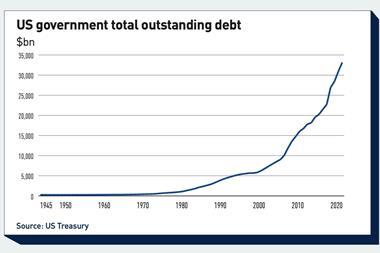Because of its underlying nature, the currency management sector is in higher need of a standardised index than the equity or interest rate sectors.
Whereas most of the other markets have indices to explain their performances and respond to the portfolio analysis needs of the fund manager, very few are available for the currency markets. Most of the currency indices available are either proprietary and not fully transparent or are passive and not relevant for dy-namic portfolio management purposes. Passive indices do not reflect any of the necessary money management skills to generate profits out of the currency market.
The dynamic currency benchmark, FXDX, has been developed by the BNP Global Markets Research group and aims to answer these issues. The originality of the FXDX resides in the transparency and replicability of its design. The benchmark replicates to a high degree of correlation the average performance of active currency managers by using technical trading rules (Fig 1). FXDX tracks the performance of seven currency pairs each timed by a set of three simple moving averages. The currency pairs tracked are US$-DM, US$-¥, GB£-US$, US$-¥, DM-¥, DM-CHF and GB£-DM. Each currency pair is weighted to reflect the average volume traded in the Foreign Exchange market. These weights were evaluated through the data of daily volume traded shown on the Reuters page DXDX (Fig. 2).
The statistical properties of technical indicators, criteria of risk reduction and transaction costs were used for the selection of the length of the moving averages (32, 61 and 117 days) which adequately represent the time horizon of most investors. Each day, the averages are calculated for each currency at settlement of the Chicago Mercantile Exchange session. These averages are then compared to the current price of the currency pairs. Should the currency price be greater than the moving average the benchmark assumes that a long position is to be initiated or held for the next 24 hours, otherwise the reverse apply. Then the value of the global position is calculated. The benchmark which excludes any simulated risk free income has an in-built leverage of 2.91 to generate the same level of risk taken by the average currency trader as represented by other existing benchmarks. The value of the FXDX was re-based on 1000 in January 1996 (Fig. 3).
Such a benchmark can be used in different ways: To test for market inefficiencies; to evaluate the performance of active currency managers or proprietary traders; and to analyse trading styles: a trend-follower will be positively correlated to the FXDX, while a contrarian trader will be negatively correlated and a discretionary trader should not be correlated to the FXDX (Fig. 4).
The Dynamic Currency Benchmark is now available monthly, on the Micropal, Tass and Refco databases. It is also published every day on the Reuters page FXDX.
A paper detailing the design and uses of the dynamic currency benchmark is available upon request from BNP's Quantitative Research and Trading Desk in London +44 171 623_8810
Pierre Lequex is head of quantitative research and trading at BNP in London.












No comments yet